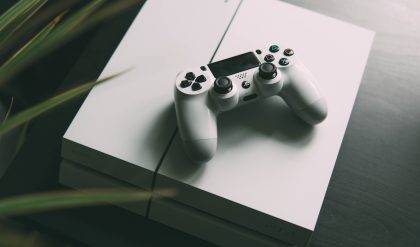How can artificial intelligence recognize a face? This is how.
Face recognition is a technology that has grown substantially in use in recent decades. Just a few decades ago, face recognition was something that we only saw in sci-fi matrix movies and something a lot of people wouldn’t expect would enter the technologies of many devices that are used in our daily lives. In fact, the facial recognition market is expected to grow to $7.7 billion in 2022. The reason why facial recognition will continue to grow so substantially is that it has such a wide spectrum of usage areas and can be applied to so many industries and purposes.
If you think about it, facial recognition is a very impressive technology. And with that said, also very advanced. Most people simply use the technology without thinking twice of it. But as you can imagine, there is a lot of research, development, and effort, that has gone into making it possible.
Facial recognition on a large scale became possible thanks to the breakthrough of deep machine learning at the beginning of this decade. Previously, face recognition was only used on a limited scale, but now, it has found its way into many people’s daily lives.
This leads us to ask the question – how does facial recognition really work?
Face recognition works the way it does thanks to Deep Machine learning. But what is it?
As per Wikipedia’s definition:
“Deep learning (also known as deep structured learning) is part of a broader family of machine learning methods based on artificial neural networks with representation learning. Learning can be supervised, semi-supervised, or unsupervised.”
Deep machine learning or deep neural networks are about a computer program that learns on its own. The reason it is called “neural” or “neural network” comes from the fact that technology is inspired by the human brains’ properties to transform data into information. It is a variant of the broader concept of machine learning, which in turn is part of what we call artificial intelligence.
With deep machine learning and machine learning applications, an algorithm serves training data and generates out a result. But on the way between these two, the algorithm interprets the signals – thus training data – in a number of layers. For each new layer, the degree of abstraction increases.
For example, let’s say that you want to build a deep neural network that can differentiate different faces or that can determine which faces are identical. Exercise data should then be a large number of images on the faces (the larger the dataset, the more accurate the network, at least in theory). Partly on different faces, but also many pictures on the same face.
Measurements are unique to each face
Of course, a computer does not “see” a face in the image, but a number of values representing different pixels. With the pixels as a background, the deep neural network learns to find patterns. The technology reads the geometry of your face such as the width of your mouth and the distance between your eyes. The more advanced the technology becomes, the more identification factors it will use. Thus allowing it to also become more accurate.
For each layer passed in the network, some patterns become more interesting (stronger signal between the “neurons” in the network) while others are ignored (weaker signal). The machines are trained via data – various signals – to produce the desired result better and better, and more accurately.
The first, second and hundredth time the algorithm performs this procedure, the results are usually not very good or accurate, but eventually, the network can achieve impressive results. The more data it collects via training, the more accurate it will be. In a way, it can be said that the network has learned to abstract and generalize, from raw pixel values to the classification of different people’s faces.
But that is perhaps not what we humans think of when we use terms such as generalization: it is rather that the network has worked out a number of metrics that are unique to each face. If the pre-trained network is served a new image on a face, the network can match that face’s measurement values to the faces on other images. If the network generates roughly the same values for different images, it is likely the same person on both images.
It is called deep machine learning because such a model can use multiple – sometimes hundreds – layers. There is also a symbolic meaning in such a way that we humans cannot really understand how the computer program works to find patterns. It operates, so to speak, deep, beneath the surface.
Although the algorithms are evolving and refining as they are, there are really two other reasons behind the breakthrough of deep neural networks: access to large data sets and cheap computing power, especially in the form of graphics cards that were most often associated with computer games.
More about face recognition technology
Your face is like a fingerprint – completely unique. With that said, by using the right technology, it is possible to identify faces, similar to how you can identify fingerprints.
There are different types of face recognition and also usage areas. Some of these you may come in contact with every single day, others, almost never.
Basic face recognition
Basic face recognition knows how to identify the characteristic lines of a face, including eyes, mouth, nose, etc. The technology is able to identify the face and understand where it is looking if you blink and if your mouth is open. This is the most basic form and is used, for example with Snapchat and Instagram lenses, which uses face recognition in order to execute augmented reality, such as face filters. You may be familiar with Facebook’s facial recognition system when you upload a photo of people. Facebook then identifies faces in the image and asks if you would like to tag the people in the photo.
Face identification
This is the more advanced technology and the one that most people associate with face recognition. This type of technology identifies your exact face and its characteristics. With that said, it knows your exact face and can then implement this to be used as a password for various things, including FaceID, and when locking up your iPhone. This technology is growing in use due to the fact that it is safe, but most importantly reduces the friction of using a password. Now, your face is the password.
Via the camera, it measures your face and can then confirm your identity.
Algorithms
Face recognition is used in a number of areas to identify strangers. This is especially the police, security, governments, airports, and more.
To identify the face of a stranger, algorithms can be used to compare a face with a large database of faces. The database may include Facebook profile photos, ID photos, and much more. The more data, the higher chance of success.
Negative and positive sides of face recognition
Face recognition has grown substantially, and many companies completely dedicated to the technology have popped up. Whilst there are amazing possibilities with this technology, there are also negative sides that can be good to be aware about (and also has caused a lot of debate about the technology and potential restrictions and limitations of it).
When the negative sides of face recognition are discussed, it is often related to privacy, power, hackers, governments, spies, and more.
Below, you can read about some of the most common areas of concern with this technology.
Privacy
As governments start implementing facial recognition technologies, they could be used in a way that limits our freedom. They could use it to track every single step of their citizens. what you do, learn your daily habits, and track your every step. This could be a serious limitation to your freedom.
This is especially risky in countries with dictatorship and questionable democracy that wants to control its citizens. Governments could use facial recognition
Security
Information about your face can (and often will) be stored. Either by the government, but also by private companies and organizations when you use their facial recognition services. Since this data is stored, it may end up in the wrong hands. Hackers could access and steal this information. This means your face could end up in many different places and it will be impossible to know who has access to it.
Mistakes
A topic that has been very actively discussed is what if the technology makes mistakes? Say for example someone commits a crime and it is identified with the technology that person is you, although completely innocent. All evidence points at you, so how can you prove your innocence?
When it comes to the positive sides of facial recognition, it includes all of the technology and new innovations that can be developed which are based on artificial intelligence. We are already seeing many of these innovations already, and they increase at a rapid pace. These innovations are often that help us in our daily lives to help make our lives easier, but they can also be used for entertainment purposes.







